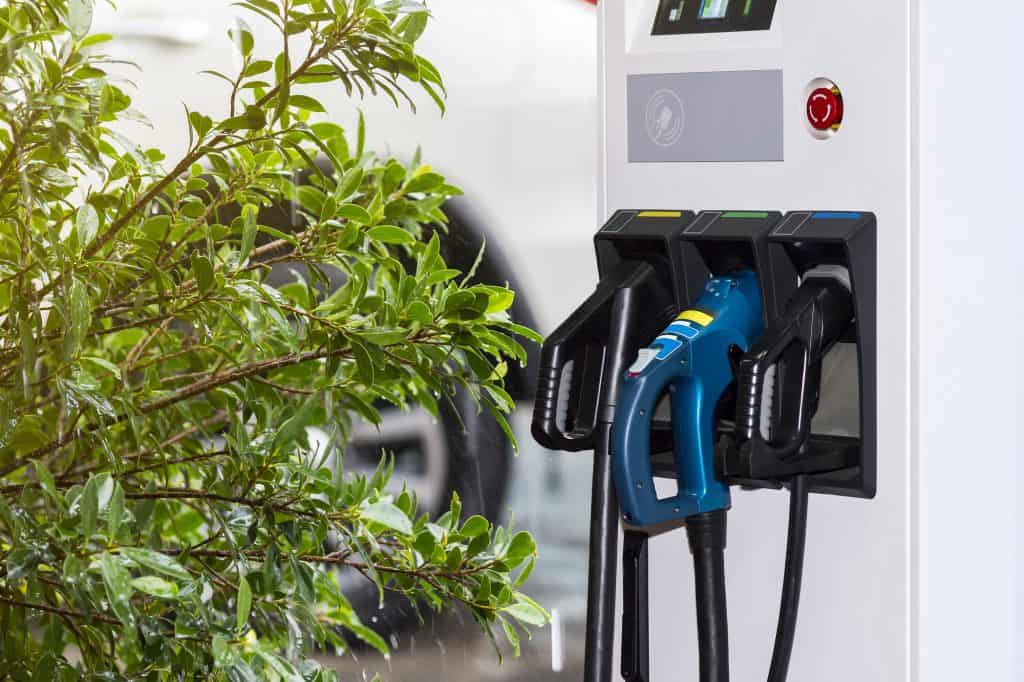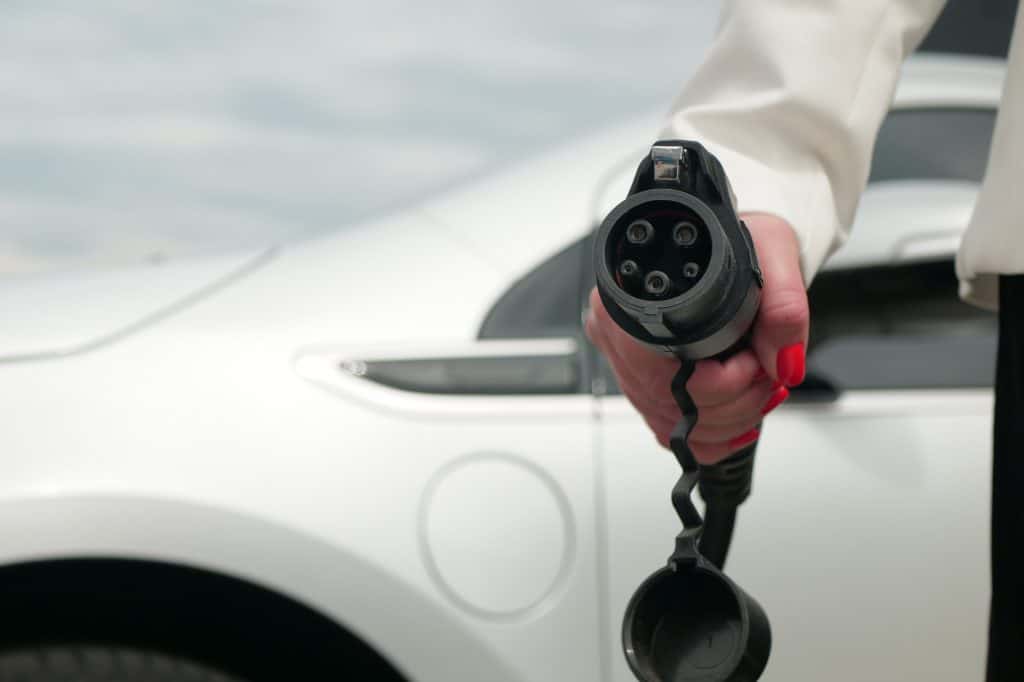If it’s raining when you go to plug in your (now wet) electric car charger, is there a danger of an electrical short, or even electrocution? I certainly hope not, but since water conducts electricity it’s something that’s understandable to wonder about: hence this article.
The Basics

All modern electric car charging stations abide by a common protocol with safety built-in known as EVSE: Electric Vehicle Supply Equipment. This protocol is designed to keep you and your car safe during the process of charging. It ensures that various safety checks are performed throughout the charging process, but it also that no charging can take place until a two-way “safety handshake” is undertaken.
That last sentence is key to understand: there is no high-voltage current (aka no electricity) flowing through the EVSE charging station and into your electric car until a two-way safety check is completed. A pilot/signal connection is made after all the charging prongs are connected properly (i.e. after the electric car charger is properly inserted/connected), and it is only when this signal connection has been completed satisfactorily that the high-voltage charging current flows from the EVSE charging station to recharge your EV.
So if the charging plug (or charging station) somehow has serious water ingress to the point where there’s a potential risk (very unlikely, as we cover later), this two-way safety handshake would fail and thus no charging current would start flowing.
This is naturally good to know, but what would happen if water gets into the charging plug? Well as you’d expect, all the different types of charging plugs have been designed to prevent (and deal with) water ingress as much as possible.
Firstly, the prongs/pins of the charger are designed so that the main ‘charging pin’ (the one that is required before the pilot/signal connection is made) is the last contact made when plugging in the connector, and the first contact to be broken when unplugging it. In other words, a fundamental flaw with the connector would be detected before the ‘charging pin’ is even inserted fully.
Secondly, you may have noticed that the connectors themselves are bulky and have lots of plastic around what’s actually fairly small electrical prongs/pins. This is to protect against water ingress and damage. Each connector pin has its own individual plastic housing on the charging port, and the matching part of the car’s port also has its own individual plastic housing.
So even if water did get into one of these pins, the water couldn’t end up touching the other pins and causing a short.
IP, NEMA 4 and GFI Protection
So from the above we know that charging up when it’s raining is not a risk because many systems are in place to detect and block dangerous charging conditions. Some of these systems/standards are worth looking at though.
Firstly there’s something called IP (ingress protection) – defined in international standard EN 60529 if you must know! – and it’s a rating scale of how well a device (such as a EVSE charging station) can handle ingress from things like dust and water.
You’ll probably notice that many charging stations and/or charging plugs/cables are rated as IP54 which is a pretty good level of protection from liquid, including being “Protected from water spray from any direction”:

Some are rated beyond this, at the even-better standard of IP66 – but don’t worry, IP54 offers a fine level of protection from rain (otherwise the device simply wouldn’t have any IP rating!).
Secondly there’s a group of American standards known as NEMA which is similar to IP in that it sets out what type of environments electrical equipment is built to withstand. Many (if not all) EVSE stations you come across will be rated as NEMA 4 which means:
Enclosures constructed for either indoor or outdoor use to provide a degree of protection to personnel against incidental contact with the enclosed equipment; to provide a degree of protection against falling dirt, rain, sleet, snow, windblown dust, splashing water, and hose-directed water; and that will be undamaged by the external formation of ice on the enclosure.
Finally, various charging stations and/or components have GFCIs built into them to trip the connection the moment a fault (or potential fault) is detected. So if somehow all the other safety measures fail (or fail to operate fully), the GFCI can also shut-off the electrical power to further mitigate any possible risk.
The only caveat is to be wary of unofficial, third party cables and adapters. Whilst many are high quality, if you had a low quality cable or adapter, it might not have the correct surge and rain protection. In this case, they could potentially be a risk in the rain. Therefore it’s always best to buy well reviewed cables and/or adapters, and ideally only ones from official stores (such as the Tesla store, or a reputable local EV store).
Videos of wet – and frozen! – charging conditions
Some EVSE station and plug connector manufacturers are so sure of the safety of their equipment in wet conditions that they’ve gone to extreme lengths to show this! It’s definitely a case of “don’t try this at home”, but the below videos demonstrate the safety of EV car charging in adverse conditions:
So as you can see, eMotorWerks (a California based EVSE producer) submerge their 15 kW charger under ice and water for 5 minutes whilst charging a Nissan Leaf. And there’s thankfully no electrical shorts, explosions, nor electrocutions!
Secondly here’s two videos of consumers charging up their cars in fairly visible rain (which means it’s pretty much a downpour, since light rain is hard to see on video):
Both cases are also fine, again demonstrating the point that EVs can be charged up when it’s raining.
Summary
In conclusion, the entire car charging system has been thoroughly designed so that it’s as safe as reasonably possible to use when it’s raining. It would be a pretty fundamental flaw of electric cars if they couldn’t be charged up when it’s raining, especially since many home chargers will be on the side of the house where they could be rained upon!
So thankfully you can rest easy knowing that there’s many safety measures in place to prevent danger when charging your car.
(Note: As always though, whilst we’re sure that you already do… please do apply some common sense! If it’s severe storm/flooding type weather when you go to charge, or you think that your charging plug/cord might be damaged, or the EVSE charging station looks faulty, don’t try and charge up.)